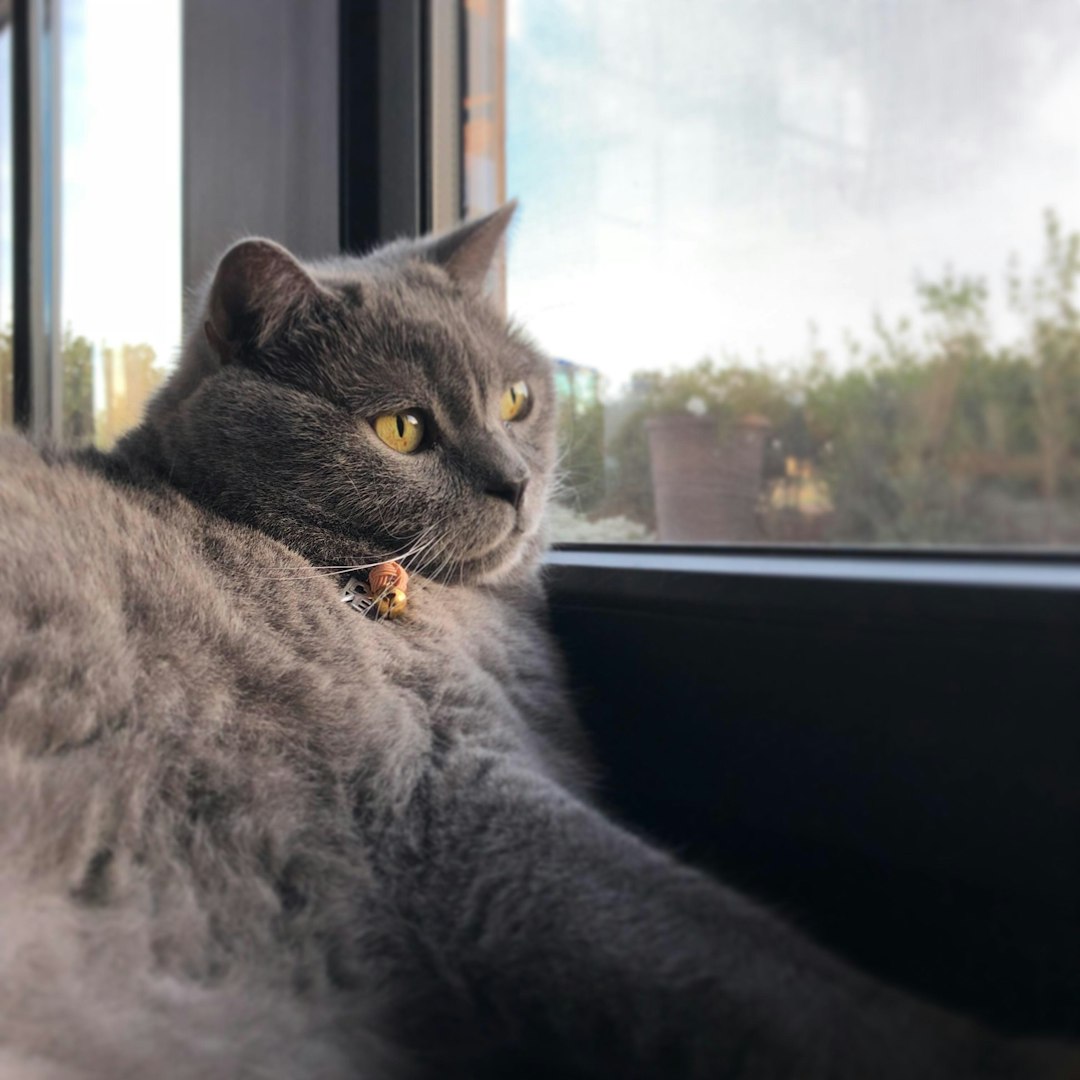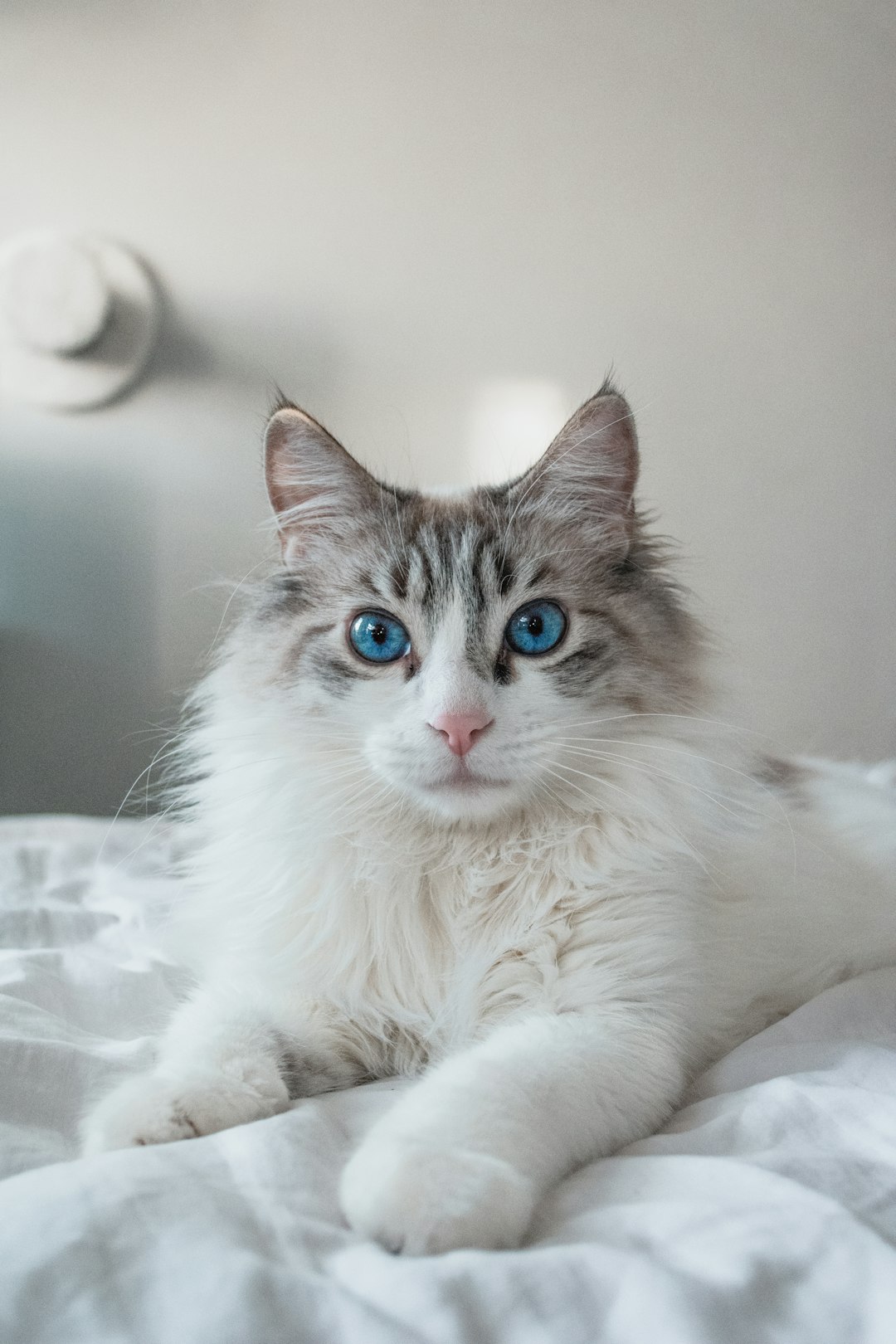As pet owners, we all want our feline friends to thrive and feel their best. However, many cats suffer from food allergies, with chicken being a common culprit. This can make finding the right nutrition a challenge. In this blog post, we’ll explore essential information about cat allergies and the importance of a balanced diet to ensure your cat remains healthy and happy. Furthermore, we will identify not only what to avoid in cat food but also highlight top chicken alternatives, including plant-based protein sources. Additionally, we will share homemade recipes and recommend commercial options that are chicken-free. Finally, we’ll guide you through the process of transitioning your cat to a new diet and the importance of consulting your veterinarian, ensuring your precious pet receives the care they deserve.
Understanding Cat Allergies
Cats, like humans, can suffer from allergies that affect their overall health and well-being. Recognizing and understanding these allergies is crucial for providing a better life for your feline friend. Here’s a deeper dive into cat allergies.
Common Symptoms of Cat Allergies
Identifying allergies in cats can be challenging, but certain signs can indicate a problem. Common symptoms include:
- Itchy Skin: This may lead to excessive grooming and hot spots.
- Ear Infections: Frequent ear itching or bad odor might signal allergies.
- Sneezing or Coughing: Respiratory symptoms can arise from allergens.
- Gastrointestinal Distress: Vomiting or diarrhea may occur in food allergies.
Types of Allergies in Cats
Cats can develop different types of allergies that affect their health and dietary needs. Understanding these can help owners make informed choices:
| Type of Allergy | Description |
|---|---|
| Food Allergies | Reaction to particular proteins, often seen with poultry. |
| Environmental Allergies | Triggered by pollen, dust, or mold in the environment. |
| Flea Allergies | Reaction to flea saliva leading to intense itchiness. |
How Allergies Affect a Cat’s Diet
Diet plays an essential role in managing allergies for many cats. In particular, chicken-free cat food options can significantly reduce allergic reactions in sensitive cats. Here are important points to consider:
- Elimination Diets: Introducing a specific set of ingredients can help pinpoint food allergies.
- Protein Variety: Consideration of diverse protein sources decreases the chance of allergic reactions.
- Balanced Nutrients: Ensure the diet remains well-rounded to maintain health while avoiding allergens.
Understanding these aspects can aid in selecting the right food and improving your cat’s quality of life.
The Importance of a Balanced Diet for Cats
Maintaining a balanced diet is crucial for your cat’s health and longevity. Just like humans, cats require a variety of nutrients to thrive. This section highlights the significance of providing a well-rounded diet, especially for those requiring chicken-free cat food options.
Essential Nutrients for Cats
Cats are obligate carnivores, meaning they primarily need nutrients found in animal products. Here are the key nutrients essential for your cat’s diet:
| Nutrient | Function | Sources |
|---|---|---|
| Protein | Builds and repairs tissues, supports immune function | Fish, turkey, beef |
| Fat | Provides energy and supports healthy skin/fur | Salmon oil, flaxseed oil |
| Vitamins | Important for metabolic processes and overall health | Leafy greens, carrots |
| Minerals | Supports bone health and various bodily functions | Liver, eggs, pumpkin seeds |
| Water | Essential for hydration, influences kidney health | Fresh water, wet food |
Impact of Diet on Overall Health
A balanced diet significantly influences a cat’s overall well-being, affecting everything from coat quality to energy levels. Proper nutrition can lead to the following benefits:
- Optimal Weight Management: Reducing the risk of obesity and associated health issues.
- Stronger Immune System: Enhanced resistance to diseases.
- Healthy Skin and Coat: A shiny coat and reduced shedding.
- Improved Digestion: Minimized instances of gastrointestinal discomfort.
Role of Protein in Cat Nutrition
Protein is a cornerstone of feline nutrition. It provides the following:
- Essential Amino Acids: Cats cannot synthesize certain amino acids, making protein sources vital.
- Energy: High-quality protein contributes to sustainable energy levels throughout the day.
In conclusion, ensuring your cat receives a balanced diet rich in essential nutrients is key to their health and happiness, especially when exploring chicken-free cat food options. By prioritizing these dietary components, you find yourself on the right path to maintaining your cat’s vitality.
What to Avoid in Cat Food
When selecting the right food for your cat, especially if they have allergies, it is essential to be vigilant about what goes into their diet. Below are critical factors to consider when choosing cat food.
Identifying Common Allergens
Many cats develop allergies to certain ingredients. Here are some common culprits:
- Chicken: As one of the most common protein sources, chicken can trigger allergic reactions in sensitive cats.
- Beef: Another frequent allergen that can cause digestive issues and skin irritations.
- Dairy: Many adult cats lack the enzyme to effectively digest lactose, leading to gastrointestinal discomfort.
- Fish: While it is often marketed as a healthy option, fish can also be an allergen for some cats.
Reading Labels for Hidden Ingredients
Understanding cat food labels is crucial for avoiding allergens. Pay attention to:
- Ingredient List: Ingredients are listed in order of abundance. The first few should ideally reflect high-quality proteins without fillers.
- “By-products”: Terms like ‘animal by-products’ can mean inclusion of low-quality sources that may not be digestible.
- Additives and Preservatives: Sometimes, these can trigger allergic reactions, so opt for natural alternatives whenever possible.
Understanding Grain-Free vs. Grain-Inclusive Foods
The debate between grain-free and grain-inclusive cat foods can be complicated. Here’s a quick comparison:
| Feature | Grain-Free Foods | Grain-Inclusive Foods |
|---|---|---|
| Common Ingredients | Peas, lentils, potatoes | Rice, corn, barley |
| Benefits | May be easier to digest | Provides carbohydrates for energy |
| Concerns | Risk of nutritional imbalance | Can exacerbate allergies |
| Suitability | Ideal for cats with grain allergies | Suitable for cats without allergies |
When selecting chicken-free cat food, always consider your cat’s specific needs. Understanding potential allergens and reading labels carefully will guide you towards a healthier diet for your feline friend.
Top Chicken Alternatives for Cat Food
When it comes to finding suitable chicken-free cat food options, several alternatives can provide your feline friend with the necessary nutrients without triggering allergies. Let’s explore some of the best choices available.
Fish-Based Cat Foods
Fish, particularly varieties like salmon and tuna, are excellent alternatives. They are rich in omega-3 fatty acids, which promote a healthy coat and skin. When selecting fish-based cat foods, consider:
- Nutrient Content: Ensure it contains essential vitamins and minerals.
- Source Transparency: Look for sustainably sourced fish to support ecological balance.
Lamb as a Novel Protein Source
Lamb is another fantastic option, especially for cats with poultry allergies. It is considered a novel protein, meaning it is less likely to trigger allergic reactions. Key benefits include:
- High Digestibility: Most cats easily digest lamb, making it suitable for sensitive stomachs.
- Rich Flavor: Cats often enjoy the taste, which can encourage picky eaters.
Venison for Sensitive Stomachs
Venison is an outstanding substitute, known for its unique flavor and excellent digestibility. It is a premium protein source and suitable for those with food sensitivities. Here are some features:
| Feature | Venison |
|---|---|
| Protein Quality | High |
| Fat Content | Moderate |
| Common Benefits | Hypoallergenic, Highly Palatable |
Incorporating these alternatives into your cat’s diet not only avoids chicken but also provides a balanced nutritional profile. Transitioning to these chicken-free cat food options can help maintain their health while keeping allergies at bay.
Plant-Based Protein Sources for Cats
When exploring alternatives for feeding cats with allergies, plant-based protein sources can play a crucial role. While cats are obligate carnivores, certain plant-based proteins can supplement their diet beneficially. Here we discuss several options:
Legumes and Their Benefits
Legumes are a fantastic source of plant-based protein that can be suitable for cats. They offer numerous health benefits, including:
- High Protein Content: Rich in protein, legumes help in maintaining muscle mass.
- Fiber-Rich: They promote healthy digestion, aiding in gastrointestinal health.
- Essential Nutrients: Contain important vitamins and minerals that support overall well-being.
| Type of Legume | Protein Content (per 100g) | Additional Benefits |
|---|---|---|
| Chickpeas | 19g | Rich in fiber and iron |
| Lentils | 26g | High in folate and magnesium |
| Peas | 5g | Good for heart health |
Incorporating Vegetables in Cat Diets
In addition to legumes, various vegetables can be effectively added to your cat’s meals. Here are some options:
- Carrots: Packed with vitamins, they can enhance eyesight and support immune health.
- Spinach: Full of antioxidants and can help with hydration.
- Pumpkin: Known for its positive effects on digestion, especially for cats with sensitive stomachs.
Pros and Cons of Vegetarian Cat Foods
Opting for vegetarian cat food comes with its unique set of advantages and disadvantages:
Pros:
- Allergy Management: Reduces the chance of allergic reactions linked to animal proteins.
- Sustainability: Generally more environmentally friendly compared to meat-based diets.
- Variety: Offers diverse dietary choices for pet owners.
Cons:
- Nutritional Gaps: Cats may miss out on essential nutrients like taurine and vitamin B12, primarily found in animal products.
- Taste Preference: Cats are often inclined to prefer meat flavors, which may lead to rejection of vegetarian options.
Balancing plant-based protein sources while ensuring the cat’s dietary requirements are met is essential. Always consult with a veterinarian for personalized advice tailored to your cat’s health needs.
Homemade Cat Food Recipes
Creating homemade cat food can be a rewarding and nourishing alternative for pet owners looking to provide chicken-free cat food options. Here are some delightful recipes and guidelines for ensuring your furry buddy’s nutritional needs are met.
Nutrient-Rich Chicken-Free Recipes
- Turkey and Quinoa Stew
- Ingredients: Ground turkey, quinoa, carrots, peas, vegetable broth
- Method: Cook quinoa and steam veggies. Brown the turkey in a pot, then add in the cooked quinoa and veggies. Pour in vegetable broth to create a stew-like consistency.
- Fish and Sweet Potato Mash
- Ingredients: Canned fish (like salmon, with no bones), cooked sweet potatoes, spinach
- Method: Mash sweet potatoes and mix in drained fish and finely chopped spinach for added nutrients.
- Beef and Vegetable Medley
- Ingredients: Ground beef, zucchini, carrots, rice
- Method: Brown the beef, then add in chopped veggies, and cook until tender. Mix with cooked rice for a fulfilling meal.
Tips for Balancing Homemade Meals
To ensure balanced nutrition in your homemade cat food, you should:
- Include Protein: Aim for animal protein as the base, such as turkey, beef, or fish.
- Supplement with Vegetables: Incorporate safe veggie options like carrots, spinach, or peas for fiber.
- Add Healthy Fats: Include sources like fish oil to support skin and coat health.
- Monitor Portions: Adjust based on your cat’s age, weight, and activity level.
Safe Ingredients to Use in Homemade Cat Food
When creating meals for your cat, choose ingredients like:
- Meat: Turkey, beef, lamb, and fish (avoid bones).
- Fruits: Blueberries and pumpkin (in moderation).
- Vegetables: Zucchini, peas, and carrots are safe options.
- Grains: Brown rice and quinoa for added carbohydrate sources.
By crafting chicken-free cat food at home, you can better control what goes into your cat’s meals, leading to a healthier and happier feline companion.
Commercial Chicken-Free Cat Food Options
Brands to Consider
When exploring options for chicken-free cat food, several brands stand out for their quality and commitment to animal nutrition. When choosing a product, consider the following reputable brands:
- Blue Buffalo: Known for its high-quality ingredients and grain-free options.
- Wellness CORE: Offers protein-rich formulations with a variety of protein sources.
- Merrick: Provides affordable options focusing on real meat and healthy ingredients.
- Natural Balance: Features limited-ingredient diets that help manage allergies effectively.
Quality Ingredients to Look For
Quality matters when selecting a suitable diet for your feline friend. Here are key components to prioritize:
- Alternate Protein Sources: Look for food that contains fish, lamb, or plant-based proteins.
- Whole Grains & Vegetables: Ingredients such as brown rice or peas can provide essential fiber.
- Vitamins & Minerals: Ensure the food contains added nutrients for a balanced diet.
- No Artificial Additives: Steer clear of artificial colors, flavors, and preservatives.
Review of Popular Chicken-Free Cat Food Products
To help you make an informed decision, here’s a comparison table of several chicken-free options:
| Brand | Main Protein Source | Key Features | Price Range |
|---|---|---|---|
| Blue Buffalo | Fish | Grain-free, real meat, antioxidants | $3 – $5 per can |
| Wellness CORE | Turkey | High protein, no corn or soy | $2.50 – $4 per can |
| Merrick | Lamb | Real whole foods, no artificial additives | $2 – $3.50 per can |
| Natural Balance | Duck | Limited ingredient, great for allergies | $3 – $4 per can |
By selecting the right chicken-free options, you can ensure your cat enjoys a nutritious and palatable diet tailored to their needs.
Getting Your Cat to Transition to New Food
Transitioning your feline friend to new food can be a delicate process, especially if you are introducing Chicken-free cat food. Cats are creatures of habit, and any sudden changes might lead to digestive upset or refusal to eat. Here are some strategies to ensure a smooth transition.
Tips for Gradual Food Changes
- Start Slow: Begin by mixing a small amount of the new food with the current diet. Gradually increase the new food’s ratio over 7-10 days.
- Daily Ratio Adjustments: For example, mix 25% new food with 75% old food for the first two days, then adjust to 50/50, and so on.
- Consistency is Key: Stick to regular feeding times to help your cat adjust to the new regimen.
Signs of Food Intolerance
While transitioning, keep an eye on your cat for any signs of intolerance, such as:
| Symptom | What It Might Indicate |
|---|---|
| Vomiting | Possible sensitivity to the new food |
| Diarrhea | Gastrointestinal upset or intolerance |
| Excessive scratching or grooming | Allergic reactions due to new ingredients |
How to Encourage Picky Eaters
If your cat is particularly finicky about trying new flavors, consider these tips:
- Mix with Favorite Treats: Combine the new food with small amounts of highly palatable treats to entice them.
- Wet Food Option: Cats often prefer wet food, so adding a bit of water or broth can make the meal more appealing.
- Patience and Encouragement: Always praise your cat when they show interest in the new food, reinforcing positive behavior.
By using these techniques, you can help your cat adjust to their new Chicken-free cat food while ensuring their dietary needs are met.
Consulting Your Veterinarian
When to Seek Professional Advice
If you suspect your cat has allergies, it’s crucial to consult your veterinarian promptly. Signs of allergies may include:
- Itching and Scratching: Persistent discomfort leading to skin infections.
- Digestive Issues: Vomiting or diarrhea can signal food intolerances.
- Respiratory Problems: Sneezing, coughing, or wheezing may indicate environmental allergies.
When you notice these symptoms, early intervention is key to ensuring the health and well-being of your feline friend.
Importance of Regular Check-Ups
Regular veterinary check-ups play a vital role in managing your cat’s diet and health. During these visits, your vet can:
- Evaluate overall health and identify potential allergy triggers.
- Recommend appropriate testing, such as skin tests or elimination diets.
- Monitor your cat’s response to new diets, ensuring they are thriving on chicken-free cat food alternatives.
Scheduling annual visits helps maintain both preventive care and effective health management.
Working with a Vet to Create an Allergy Plan
Collaborating with your veterinarian to develop a customized allergy management plan is essential. This plan may include:
- Dietary Adjustments: Transitioning to chicken-free cat food or alternative proteins.
- Medication: Prescribing antihistamines or corticosteroids for severe allergic reactions.
- Home Environment Changes: Implementing allergen-reducing strategies, such as air purifiers or hypoallergenic cleaning products.
By leveraging professional expertise, you can ensure your cat’s diet and lifestyle support their health, ultimately contributing to their quality of life.
Frequently Asked Questions
What are some common allergens in cat food that chicken-free options address?
Common allergens in traditional cat food often include chicken, beef, and dairy products. For cats with sensitivities or allergies, chicken is a prevalent trigger that can lead to gastrointestinal issues, skin irritations, and other health problems. Chicken-free cat food alternatives usually address these issues by replacing chicken protein with other meat sources such as fish, turkey, or plant-based proteins, thereby helping to reduce the risk of allergic reactions while still providing essential nutrients.
What ingredients should I look for in a chicken-free cat food?
When selecting chicken-free cat food, look for high-quality protein sources such as fish (salmon, tuna), turkey, or lamb as the main ingredient. Additionally, ensure that the food contains a variety of essential nutrients, such as taurine, omega fatty acids, vitamins, and minerals. It’s also beneficial to choose options that include wholesome carbohydrates and fiber from sources like sweet potatoes or peas, as these enhance digestion and overall health. Always check the product label for potential allergens and consult a vet if unsure.
Can I make homemade chicken-free cat food?
Yes, you can make homemade chicken-free cat food, but it’s critical to ensure it is nutritionally balanced. Using ingredients like turkey, fish, and certain vegetables is advisable. Make sure to include essential nutrients, such as taurine and fatty acids, that are crucial for your cat’s health. Consulting with a veterinarian or a pet nutritionist will help you create a well-rounded recipe that meets your cat’s dietary needs without compromising their health.
Are there any specific brands that offer quality chicken-free cat food?
Yes, many reputable brands specialize in chicken-free cat food, including Wellness, Blue Buffalo, and Natural Balance. These brands often provide a variety of recipes that cater to cats with allergies and sensitivities. It’s advisable to read reviews and check ingredient lists to ensure the products are of high quality. Consulting your veterinarian for recommendations based on your pet’s specific needs is also highly recommended to find the best option available.
How can I tell if my cat has an allergy to chicken?
Determining if your cat has a chicken allergy involves observing behaviors and symptoms. Common indicators include itching, excessive scratching, vomiting, diarrhea, and skin irritations after eating chicken-based products. A thorough vet examination can help diagnose the allergy, often involving an elimination diet where chicken is removed and monitored. Keeping a food journal to track dietary intake and symptoms can also assist in identifying food-related allergies affecting your cat.



